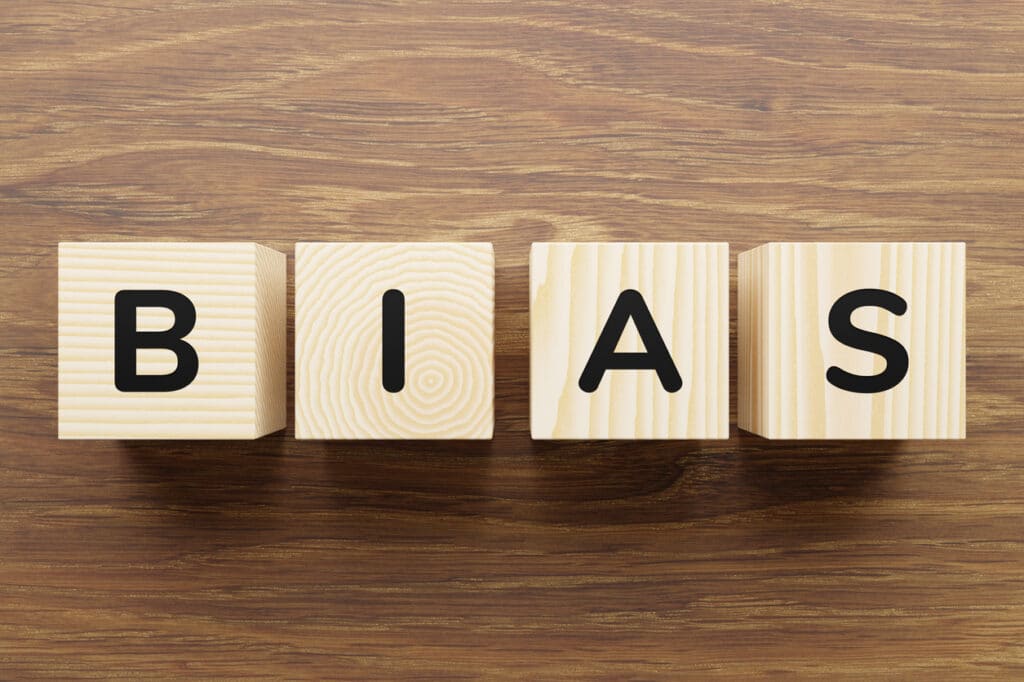All healthcare providers are expected to operate within the communities they serve without bias and prejudice. Of course, every institution is run by human beings, and that means biases that impact patient outcomes will inevitably creep in. If left unchecked, the results can be catastrophic, deterring certain populations from seeking help and further widening the gap in health disparities.
While these conversations can be difficult to manage, making sure they happen is an important duty for any healthcare professional. One of the biggest challenges is that biases aren’t always obvious; most people mean well, and addressing problems with compassion and conscious action is the key to encouraging change. By exploring and tackling implicit vs. explicit bias in healthcare institutions, providers can improve health outcomes for all their patients.
Understanding Biases in Healthcare
The negative ideas or feelings one has about another person or group based on things like gender, physical characteristics, sexual preference, age, or ethnicity are known as biases. While these biases are worth addressing in our personal lives, when they enter the doctor’s office they can become especially damaging.
Within healthcare, bias and associated discrimination can be present on an individual or institutional level, potentially resulting in the patients receiving poor treatment, delays in care, or even wrong diagnoses. The stress experienced by those victimized by marginalization and bias can even have a secondary impact on their health and wellness. People who have bad experiences may avoid seeking care even when serious health problems emerge, and biased treatment can impact how entire communities and future generations engage with their health systems.
Biases can have a direct impact on the health outcomes of every patient they touch, and it is the responsibility of all healthcare providers to strive for impartial access to care and treatment for everyone they serve.
Implicit vs. Explicit Bias
Biases can be divided into two categories: implicit and explicit. Each manifests differently, and combatting implicit vs. explicit bias often requires different approaches to manage and minimize the results.
Explicit Bias
Explicit bias— sometimes referred to as “conscious bias”—is a clear display of negative feelings through actions or words. Explicit bias is intentional in targeting its victims through physical or verbal harassment, or by passive-aggressive mechanisms like exclusion.
Because they are usually conscious choices, explicit biases are often easier to spot. A rude or offensive comment is easily noticed by peers, and will often result in disciplinary action being taken to correct the behavior.
Implicit Bias
Implicit bias—or “unconscious bias”—manifests outside of a person’s awareness, and can exist in direct opposition to stated beliefs or values. Implicit bias is an especially challenging phenomenon to combat because the first step is raising awareness. These biases persist because people don’t realize what’s happening, and change often requires an ongoing process of education and training.
The covert nature of implicit bias can wreak havoc on healthcare. Healthcare workers may express their implicit bias without even realizing it, allowing it to interfere with things like patient assessment, decision-making, and relationships. As people become more comfortable in their roles and gain confidence, implicit biases can become routine points of diminished care for particular populations.
Potential Areas of Bias
Working in healthcare exposes workers to people from all walks of life, and that diversity creates opportunities for numerous potential areas of bias. Whether implicit or explicit, biases can exist for nearly any reason, but there are a few areas that are both extremely common and of serious concern:
- Racial Groups: Racial bias in the U.S. healthcare system has been a longstanding challenge that impacts outcomes in virtually any category of care. Black, Hispanic, and Native American people all suffer from both explicit and implicit biases, and eradicating discrimination is a major priority in the health industry today.
- Disability: There are 42.5 million people in America living with disabilities today, and they face discrimination from healthcare providers in a variety of ways. Chief among them is access to care, with refusal to provide service being one of the most commonly cited issues. The ADA requires equal access for all people with disabilities to healthcare, but bias remains an ongoing challenge at all levels of service in the industry.
- Sex and Gender: A patient’s sex or gender can have a huge impact on the quality of care they receive. For instance, research indicates that providers often respond differently to complaints like chronic pain depending on a patient’s sex. These biases can become even more complicated when it comes to treating patients whose gender identity is different than the sex assigned at birth, and LGBTQIA+ bias continues to create serious health disparities for these communities.
- Age: Differences in the treatment and management of both acute and chronic medical conditions may be approached differently by healthcare professionals who view the elderly as unwilling, helpless, or demanding. Age discrimination can occur within any age category, including children and teens.
- Obesity: Any number of biases can be present when it comes to treating people who are overweight or obese. Fatphobia fueled by both implicit and explicit biases can bring on traumatizing dialogue and intense shame or a sense of failure.
Combatting Bias in Healthcare
All people deserve access to healthcare systems that understand potential biases and work to treat them fairly and compassionately. For this to be possible, combatting discrimination needs to be actively pursued through continuing education and policy development. All institutions should strive to:
- Establish an understanding of the cultures their patients represent.
- Avoid stereotyping patients.
- Understand and appreciate the significance of unconscious bias.
- Identify situations that promote stereotyping and bias.
- Provide evidence-based care for all patients.
- Support education on health disparities.
- Allow for in-depth conversations on health and wellness.
- Be aware of the additional needs of patients with disabilities.
Stay Informed on Implicit vs. Explicit Bias
Implicit and explicit bias represents a true and present danger in our health systems, and without a solid understanding of how to recognize them within ourselves and others, health disparity gaps will continue to widen.
Premiere is committed to creating continuing education for healthcare professionals that includes best practices and training on implicit vs. explicit bias, as well as guidance for providing optimal care for all patients regardless of their background and identity.
Implicit Bias Training for Healthcare Providers created by Megan Arbour PhD, RN, CNM, CNE, and Implicit Bias - Weight Stigma in Healthcare created by Anne Cockerham PhD, RN, CNM, WHNP-BC, CNE are two courses that provide critical support for combatting the presence of biases in healthcare. By improving awareness of where biases come from, how to recognize them, and how to manage them, you can be a partner and champion for creating equitable outcomes for all.





